Tan Vu-Lach Huyen Bridge is located in northern Vietnam, close to the South China Sea. It is a prestressed reinforced concrete sea-crossing bridge.
The bridge is 3.4 mi (5.4 km) long and its longest span is 1608 ft (490 m). It started construction on February 15, 2014, and opened on September 2, 2017. This 4-lane bridge cost 11.8 trillion VND (US $510 million), mainly invested by Japan.
It is part of the Tan Vu-Lach Huyen Expressway project, which is 9.7 mi (15.6 km) long. It leads to the Lach Huyen deep-water port in Vietnam.
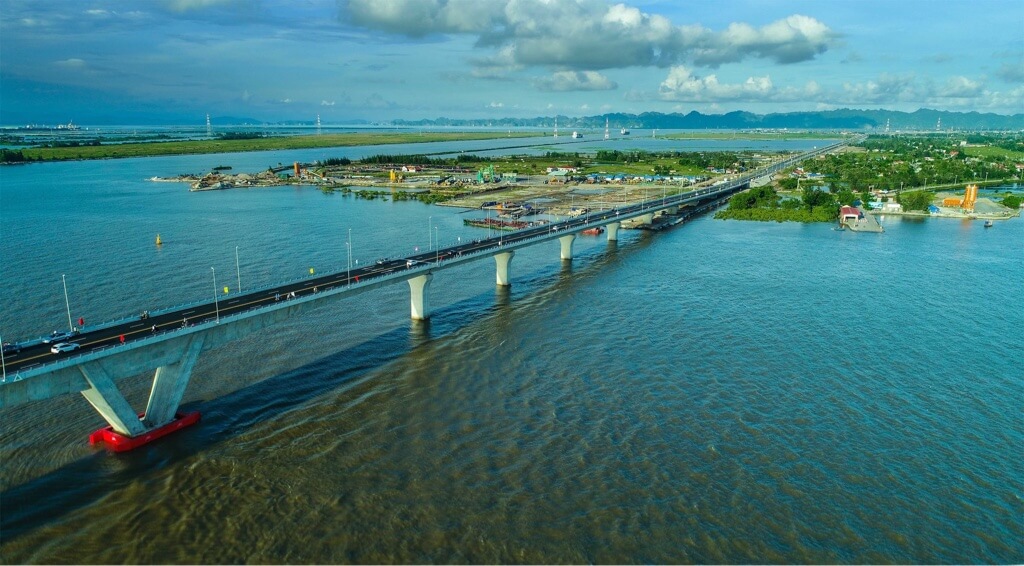
History
November 2, 2011: The Vietnamese government signed an assistance agreement for the bridge project and decided to use advanced technology from Japan.
February 15, 2014: Prime Minister Nguyen Tan Dung of Vietnam ordered the construction of the bridge to begin.
September 2, 2017: Tan Vu-Lach Huyen Bridge was officially opened.
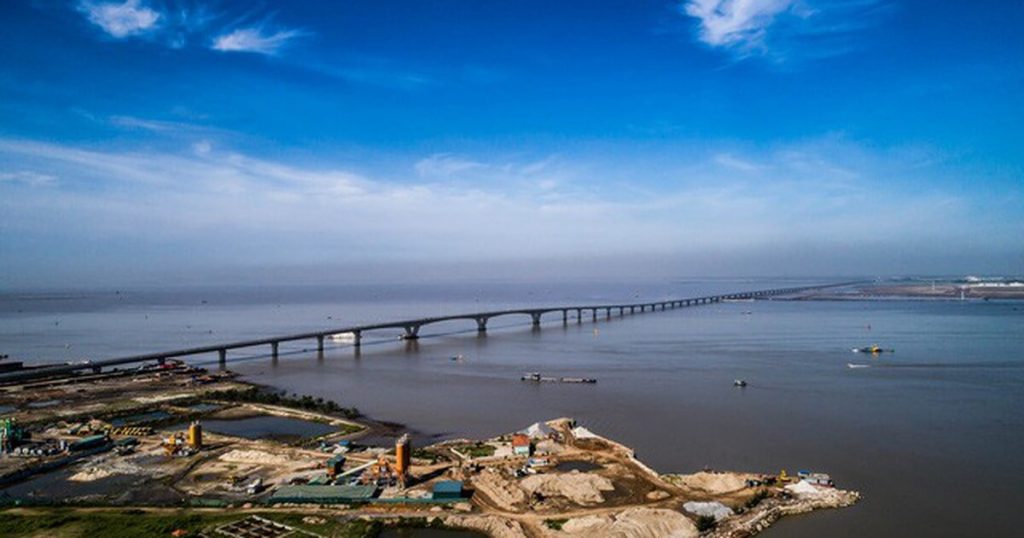
Building technical parameters
The Tan Vu-Lach Huyen Expressway has a total length of 9.7 mi (15.6 km). The section is 6.3 mi (10.2 km) long, and the bridge section is the Tan Vu-Lach Huyen Bridge.
The Tan Vu-Lach Huyen Bridge is 3.4 mi (5.4 km) long and its longest span is 1608 ft (490 m). The bridge is connected by 88 spans of 197 ft (60 m). It is one of the longest sea-crossing bridges in Southeast Asia.
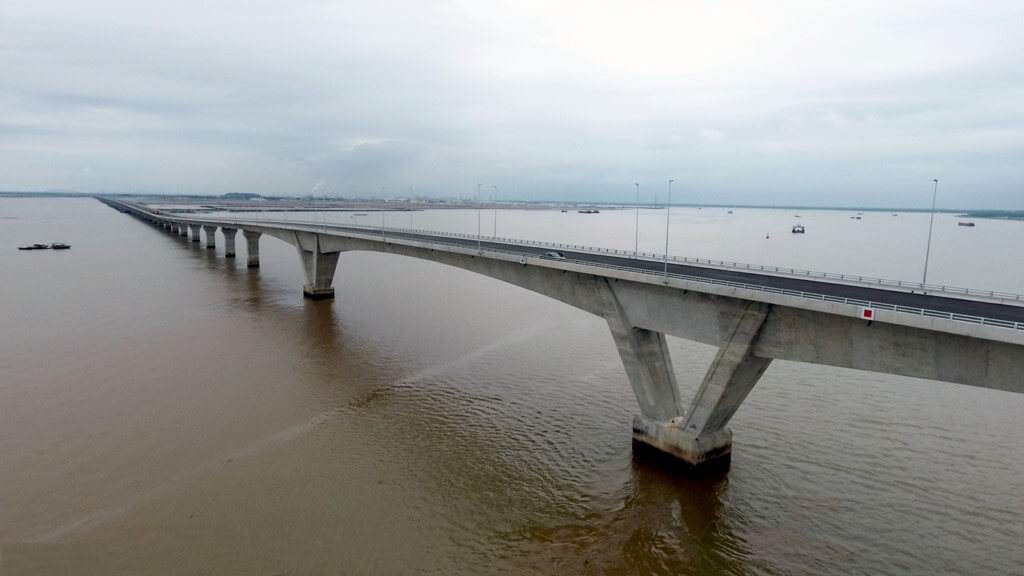
The bridge is 52 ft (16 m) wide and has 4 lanes (2 lanes are electric lanes and 2 lanes are basic lanes). The designed operating speed of the bridge is 80 km/h.
The bridge was built by 2,000 experts, engineers and workers, using more than 200 equipment and machines and 20 barges weighing 1,500 tons.
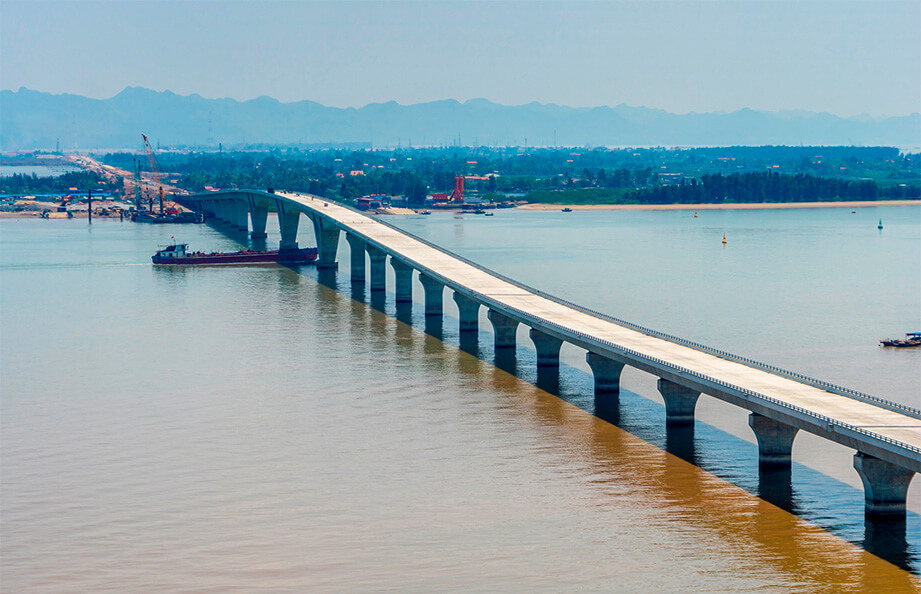
The role and significance of the bridge
The completion of the Tan Vu – Lach Huyen road and bridge is an important part of the larger Lach Huyen port project, which involves a new deep-water port that is booming in northern Vietnam.
Haiphong Port was completed in 2018. Haiphong City has become the most important gateway from northern Vietnam to the world, and uses the advantages of multimodal transportation via air/port/road to attract investment in Haiphong.
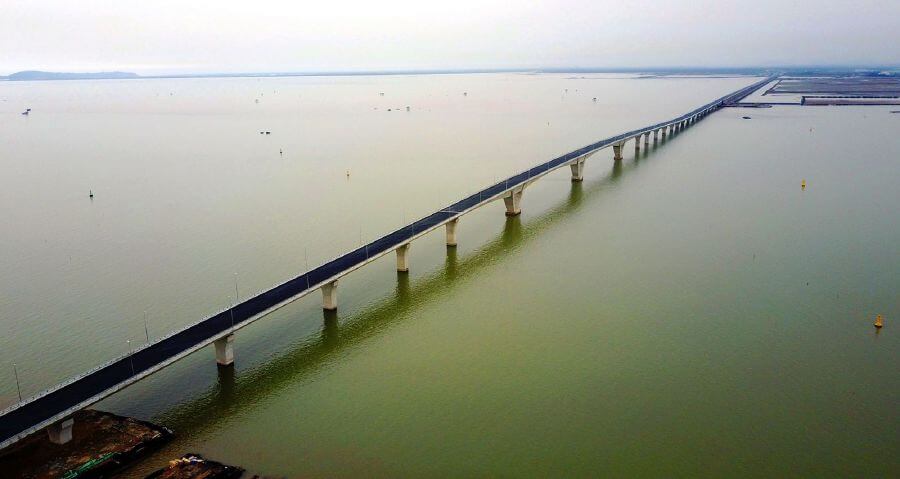
Fund composition
The bridge project cost 11.8 trillion VND (US $510 million). Among them, the Japan International Cooperation Agency (JICA) contributed 11.8 trillion VND, and the Vietnamese government contributed 1.8 brillion VND.
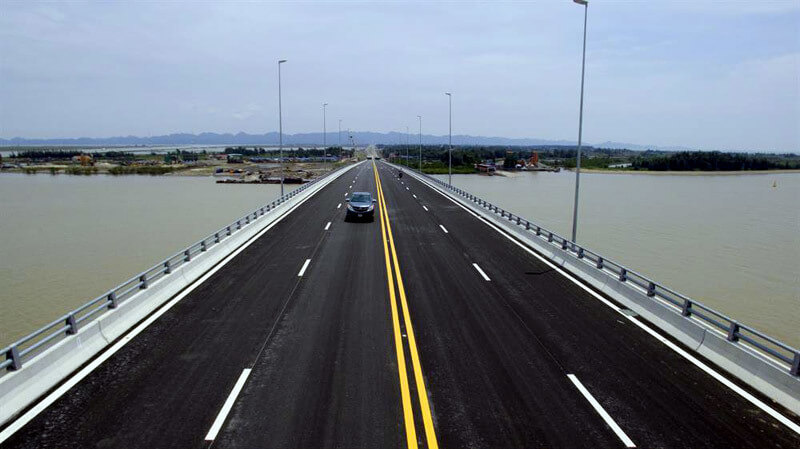
Tan Vu-Lach Huyen Bridge Data
- Country
- Vietnam
- Region
- Southeast Asia
- Status
- In use
- Official name
- Cầu Tân Vũ – Lạch Huyện
- Location
- Hải Phòng, Vietnam
- Contractor
- Civil Engineering Construction Corporation No. 4 JSC (CIENCO 4) Sumitomo Mitsui Construction Co., Ltd. (SMC) Truong Son Construction One Member LLC
- Cost
- 11.8 trillion VND (US $510 million)
- Began
- Feb-15, 2014
- Opened
- Sep-02, 2017
- Total length
- 3.4 mi ( 5.4 km )
- Length over water
- 3.4 mi ( 5.4 km )
- Width
- 52 ft ( 16 m )
- Longest span
- 1608 ft ( 490 m )
- Design speed
- 80 km / h
- Road scale
- 4 lanes
View Tan Vu-Lach Huyen Bridge on Google Satellite Map
Google satellite maps allow you to see building details more clearly, including natural landscapes such as mountains, rivers, deserts, sea and man-made engineering buildings.
If you are very interested in this engineering building, it is a good idea to click below Google Map icon. We will help you jump to the corresponding location of this building or engineering on Google satellite map.






























































